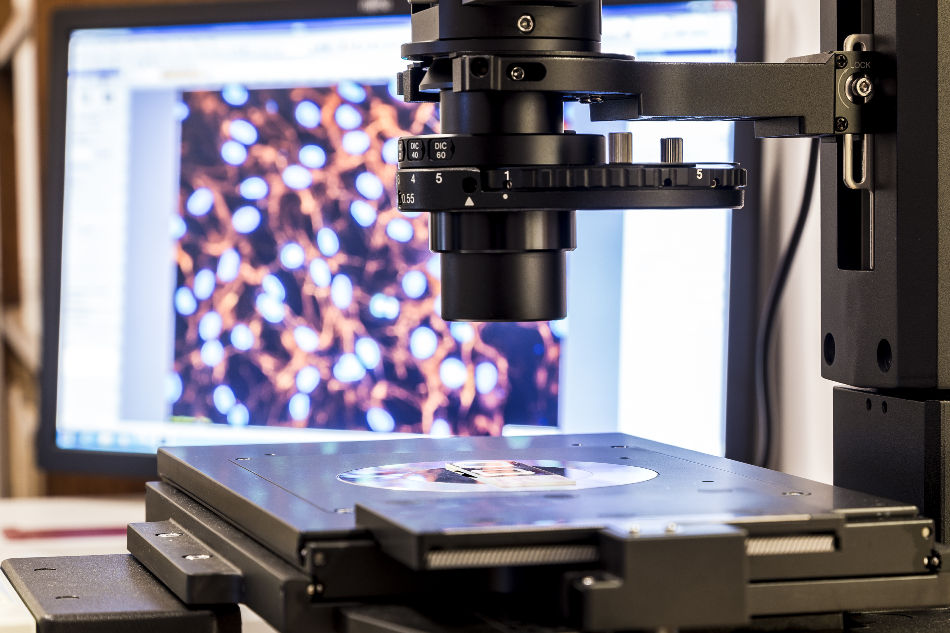Article Updated 22nd July 2021
While an optical microscope allows users to visualize microscopic structures using magnification and visual light, an atomic force microscope (AFM) can provide information on atomic-scale structures by using a tiny physical probe.

Image Credit: Dominika Zara/Shutterstock.com
Molecular-scale structures are so small, they are visually imperceptible since they are smaller than wavelengths of optical light. Therefore, visualizations of these structures with an AFM has been achieved with significant data processing. Unfortunately, a lot of critical information that could be visualized is lost during processing, and the image produced by a typical AFM appears as a rough black-and-white sketch.
In a 2017 study, however, an international team of researchers described how they were finally able to create highly representative color images using AFM.
AFM is one of the most effective tools in examining surfaces at the molecular scale. An AFM system passes a nanoscale probe tip over a surface to uncover a wealth of information, including the physical locations of atoms, their chemical qualities, and behavior.
In the study, scientists led by a team from the University of Tokyo described a new way of using AFM to visualize structural and chemical data as vibrant, full-color images. The newly created technique makes it possible for the observation of semiconductors and various chemical compounds in a fairly short time. The research team said it could become commonly used in the study and the development of nanoscale surfaces and devices.
The study team also said their ground-breaking approach was linked to the association of the AFM tip height to the base of the frequency curve, making it possible for them to carry out multiple measurements concurrently without data loss. In a conventional approach, the AFM tip is held at a predetermined height while the shifts in its vibrations are measured. A different conventional approach involves moving the AFM tip vertically so that the vibrational frequency remains consistent. While these approaches have their benefits, they can be time-intensive and subject to information loss.
In the study, the scientists described how the AFM tip could be moved so that it remains above the surface allowing the vibrational frequency to be strongly affected. The predominant advantage of this method is it producing three variables; each of which the scientists designated the colors red, blue or green. The scientists said they could that acquire structural and chemical data in clear, full-color detail, with each color designated to a certain atom and environment. This association permitted the creation of full-color imagery of a silicon test sample.
The study team said their new way of indicating intricate chemical and physical data from a nanoscale surface allows for the future study of molecules and atoms in ground-breaking detail.
Creating a Thin Film with Full-Colour AFM Imagery
In 2018, a different team from the University of Tokyo were able to leverage the AFM system developed by their colleagues, to create a new semiconducting thin-film material, inspired by the cell membrane.
The study team created the new thin film with molecular bilayers resembling the lipid bilayer found in a cell membrane. Using the natural forces of repulsion and attraction to establish a condition known as geometric frustration, the study team was able to align molecules in a ‘head-to-tail’ fashion, appearing as a herringbone or crosshair pattern when viewed with the colorized AFM. With this cutting-edge microscopy technique, the team visualized color differences that represented varying lengths of molecular tails in their thin film.
The University of Tokyo team said they plan to continue investigating geometrically frustrated molecular bilayers, using the colorized AFM and other tools.
Sources
https://www.iis.u-tokyo.ac.jp/en/news/2773/
https://www.u-tokyo.ac.jp/focus/en/articles/a_00603.html
Disclaimer: The views expressed here are those of the author expressed in their private capacity and do not necessarily represent the views of AZoM.com Limited T/A AZoNetwork the owner and operator of this website. This disclaimer forms part of the Terms and conditions of use of this website.